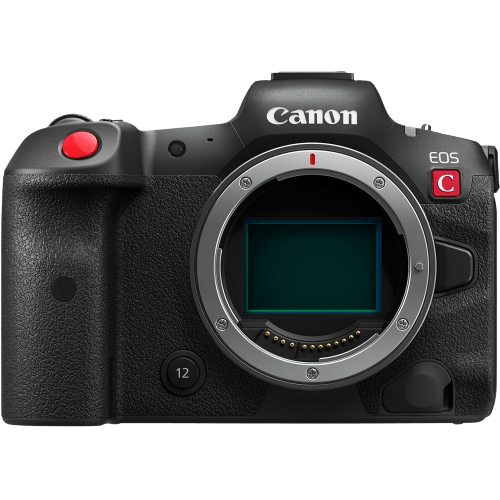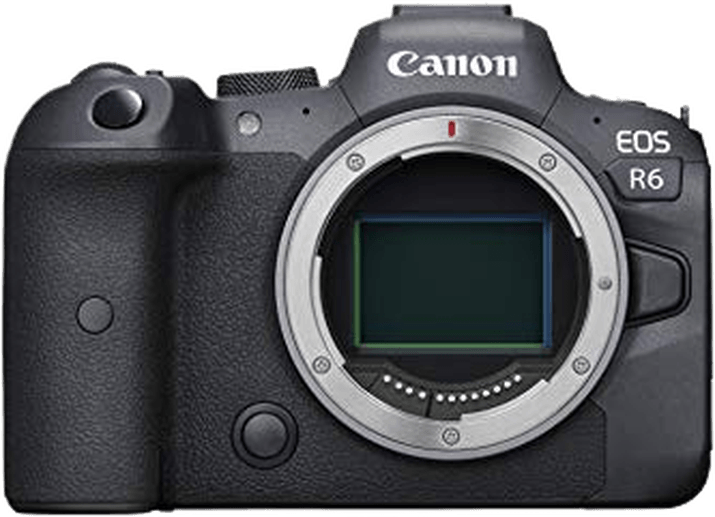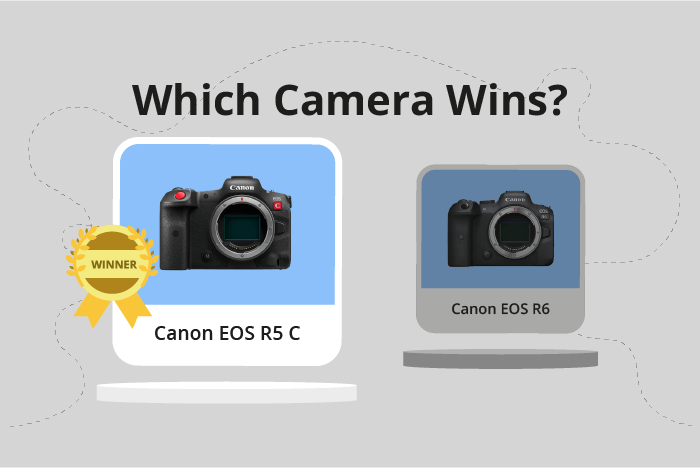Canon EOS R5 C vs EOS R6 Comparison
Canon EOS R5 C

Canon EOS R6

The Canon EOS R5 C outperforms the Canon EOS R6 with a score of 87/100 compared to the R6’s 80/100. Both cameras are mirrorless, with the R5 C being announced in January 2022 and the R6 in August 2020. They share similar dimensions, with the R5 C measuring 142 x 101 x 111mm and weighing 770g, while the R6 is slightly smaller and lighter at 138 x 98 x 88mm and 680g.
The R5 C’s higher score highlights its superior performance and features. However, the R6 has its advantages, such as a lower launch price of $2499 compared to the R5 C’s $4499, making it a more budget-friendly option.
Despite the price difference, the R5 C’s advanced specifications and performance justify its higher score and make it an excellent choice for professionals and enthusiasts alike. The R6, on the other hand, offers a solid option for those seeking a more affordable yet capable mirrorless camera.
Canon EOS R5 C vs EOS R6 Overview and Optics
The Canon EOS R5 C outperforms the Canon EOS R6 in optics with a score of 88/100 compared to the R6’s 79/100. Both cameras share several optical features, including a 20 fps shooting speed, CMOS sensor type, Digic X processor, full-frame sensor size, Canon RF lens mount, and built-in image stabilisation.
The R5 C’s superiority in optics is mainly due to its higher megapixel count of 45 compared to the R6’s 20.1 megapixels. This difference allows the R5 C to capture images with greater detail and resolution, making it more suitable for professional photographers and those who require high-quality images for print or large-scale display. Additionally, the R5 C has a higher DXOMARK sensor score of 97, indicating that its sensor performs better in terms of dynamic range, color depth, and low-light performance.
On the other hand, the R6, with its lower megapixel count, might be better suited for photographers who prioritize faster processing and file transfer times, as well as those who do not need extremely high-resolution images. Its lower score does not necessarily mean it is a poor-performing camera, but rather it is more suited for different purposes.
In comparing these two cameras, the Canon EOS R5 C clearly holds an advantage in terms of optics, making it the better choice for photographers who require high-resolution images and top-notch sensor performance. The Canon EOS R6, while not as impressive in terms of optics, still offers a solid performance and may be more suitable for those who value speed and efficiency over maximum resolution.
Canon EOS R5 C vs EOS R6 Video Performance
The Canon EOS R5 C outperforms the Canon EOS R6 in video capabilities with a video score of 100/100, compared to the R6’s score of 91/100. Both cameras share some common video specifications, including a maximum video frame rate of 120fps and built-in time-lapse functionality. However, the R5 C demonstrates superior performance in key areas.
The most significant advantage of the R5 C is its maximum video resolution of 8K (8192 x 4320), which is substantially higher than the R6’s 4K (3840 x 2160) resolution. This means the R5 C can capture more detailed and visually stunning videos, making it an excellent choice for professional videographers and filmmakers.
On the other hand, the R6 does not offer any significant advantages over the R5 C in terms of video capabilities. Both cameras share the same maximum frame rate and time-lapse functionality, but the R6’s lower resolution limits its potential for capturing high-quality video content.
Considering these points, the Canon EOS R5 C emerges as the superior camera for video capabilities due to its exceptional 8K resolution, which sets it apart from the R6. Meanwhile, the Canon EOS R6 remains a reliable option for those who do not require the highest video resolution, but still want a capable camera with good video performance. The choice between these two cameras ultimately depends on the user’s specific needs and priorities in terms of video quality and resolution.
Canon EOS R5 C vs EOS R6 Features and Benefits
The Canon EOS R5 C emerges as the winner in the features category, scoring 87/100, while the Canon EOS R6 follows closely with a score of 85/100. Both cameras share several specifications, including touchscreen functionality, flip screens, Wi-Fi, and Bluetooth connectivity. However, neither camera offers GPS capabilities.
The R5 C boasts a larger screen size, measuring 3.2 inches, compared to the R6’s 3-inch screen. This difference allows for better image viewing and menu navigation. Additionally, the R5 C’s screen resolution is higher at 2,100,000 dots, providing a clearer and more detailed image display than the R6’s 1,620,000-dot screen.
Despite trailing in overall feature score, the Canon EOS R6 still offers some advantages. With its slightly smaller screen and lower resolution, the R6 may consume less power, potentially extending battery life during use. Additionally, the R6 is likely more affordable than the R5 C, making it a more budget-friendly option for photographers who may not require the extra screen size and resolution.
In comparing the feature sets of these two cameras, the Canon EOS R5 C holds a slight edge over the R6, with its larger screen and higher resolution contributing to a superior viewing experience. However, the R6 remains a solid option for those seeking a more budget-conscious alternative without sacrificing essential features. Both cameras provide a strong foundation for photographers to capture stunning images and videos, with their shared specifications ensuring seamless connectivity and user-friendly operation.
Canon EOS R5 C vs EOS R6 Storage and Battery
The Canon EOS R5 C and Canon EOS R6 both score 68/100 in storage and battery, indicating no clear winner in this category. Both cameras have two memory card slots and are compatible with UHS-II SD cards. Additionally, they both use the LP-E6NH battery type and offer USB charging.
However, the R5 C accepts CFexpress B cards, providing faster read and write speeds compared to the SD cards used by the R6. This advantage benefits photographers and videographers who require quick data transfer for their work.
In contrast, the R6 has a slightly longer battery life at 360 shots compared to the R5 C’s 320 shots. This difference may be beneficial for photographers who need more battery life during extended shooting sessions.
Considering these factors, the Canon EOS R5 C offers better storage capabilities with its CFexpress B card compatibility, while the Canon EOS R6 has a slight advantage in battery life. Both cameras are strong contenders in their respective areas, and the choice between them should depend on the specific needs and priorities of the user.
Canon EOS R5 C vs EOS R6 – Our Verdict
Are you still undecided about which camera is right for you? Have a look at these popular comparisons that feature the Canon EOS R5 C or the Canon EOS R6:

